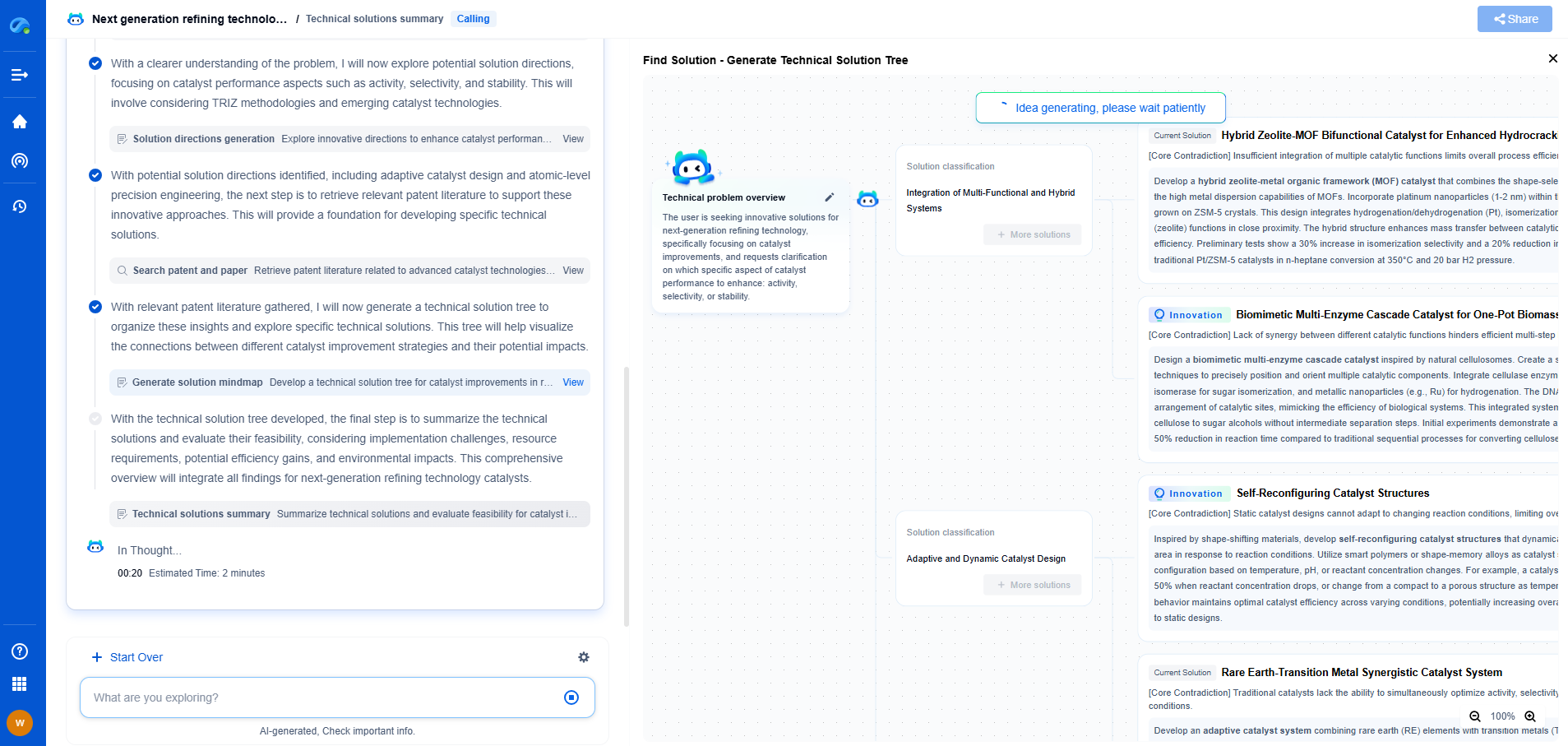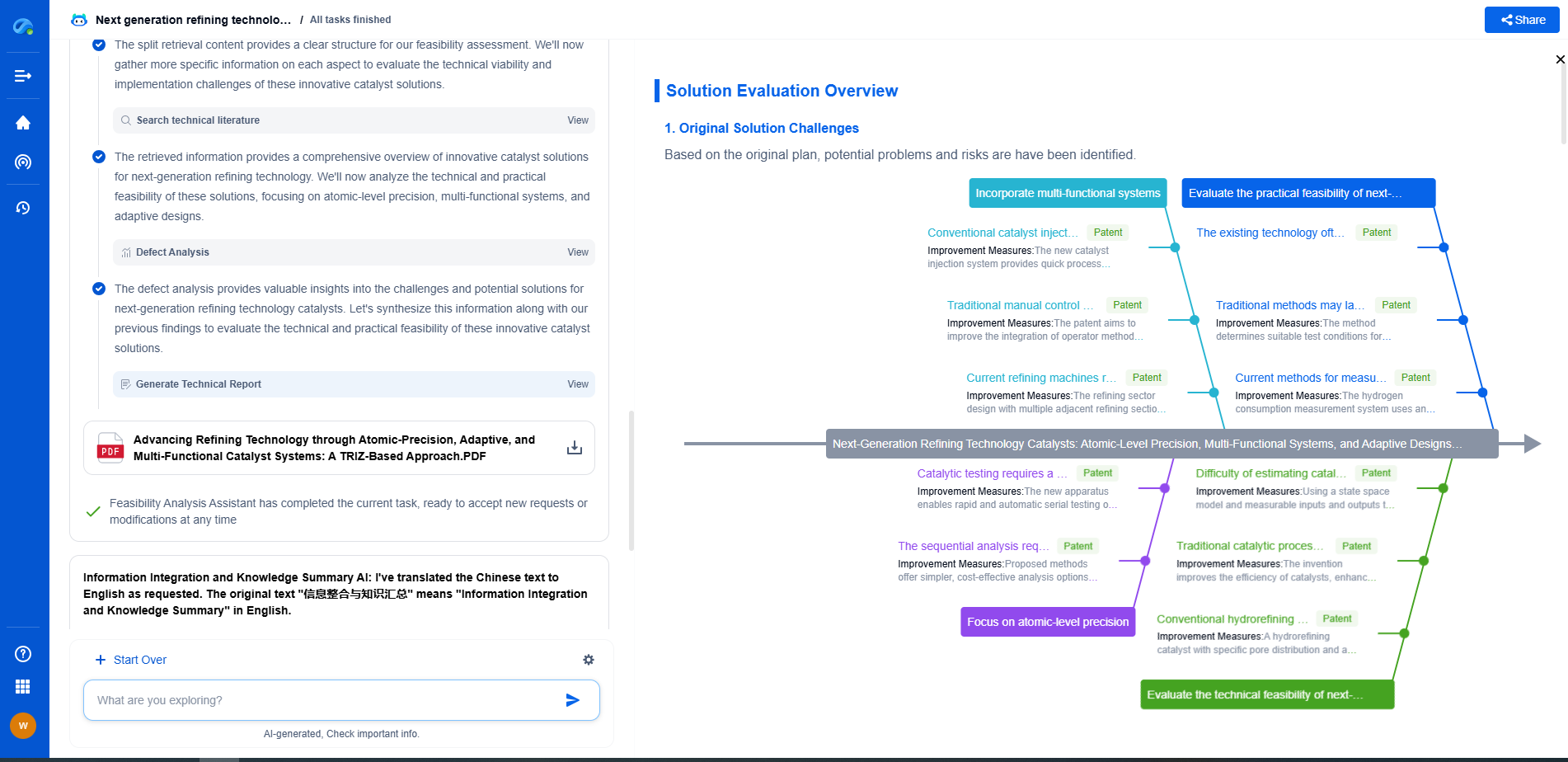How to Improve Signal-to-Noise Ratio with Operational Amplifiers?
JUN 27, 2025 |
Improving the signal-to-noise ratio (SNR) is essential in electronic circuit design, especially when dealing with low-level signals. Operational amplifiers (op-amps) play a significant role in achieving a high SNR due to their versatility and performance capabilities. This article delves into various strategies and considerations for enhancing the SNR in circuits using operational amplifiers.
Understanding Signal-to-Noise Ratio
Before delving into how op-amps can improve SNR, it's crucial to understand what SNR actually is. Signal-to-noise ratio is a measure of the desired signal's power compared to the power of background noise. A higher SNR indicates a clearer and more distinguishable signal, which is crucial in applications like audio processing, sensor data acquisition, and communication systems.
Choosing the Right Op-Amp
The first step in enhancing SNR is selecting the appropriate op-amp for your application. Low-noise op-amps are designed specifically to minimize internal noise contributions. Parameters to consider include:
- **Noise Figure**: Lower noise figures indicate better performance.
- **Bandwidth**: Ensure the bandwidth suits your signal without adding unnecessary noise.
- **Input Bias Current**: Lower input bias currents are preferable as they contribute less noise.
Circuit Configuration
The way you configure the op-amp circuit can significantly impact the SNR. Here are some common configurations that can enhance SNR:
- **Inverting vs Non-Inverting**: Non-inverting configurations generally offer better noise performance because the input source is directly fed into the non-inverting input, reducing noise contributions.
- **Differential Amplifiers**: These can effectively reject common-mode noise, enhancing the SNR in environments with significant interference.
- **Instrumentation Amplifiers**: Using multiple op-amps in an instrumentation amplifier can further reduce noise through precision matching and high common-mode rejection.
Feedback and Stability Considerations
Feedback is crucial in controlling the gain and, consequently, the noise performance of the amplifier. Proper feedback network design can help in minimizing noise:
- **Negative Feedback**: This reduces the overall gain, which can help in preventing noise amplification.
- **Compensation**: Ensure that the feedback network compensates for any phase shifts or stability issues, which can inadvertently increase noise.
Power Supply Design
The power supply can be a significant source of noise in op-amp circuits. Consider the following to minimize noise from power supplies:
- **Decoupling Capacitors**: Place these capacitors close to the op-amp power pins to reduce power supply noise.
- **Regulated Power Supplies**: Use voltage regulators to maintain a stable voltage level, reducing power supply variations that contribute to noise.
- **Grounding Techniques**: Implement proper grounding techniques to prevent ground loops which can introduce noise.
Component Selection
The passive components used with op-amps also play a role in noise performance. Resistors, for example, contribute thermal noise, so it’s crucial to choose low-noise resistors:
- **Metal Film Resistors**: These typically have lower noise levels compared to carbon resistors.
- **Capacitor Quality**: Use high-quality capacitors with low equivalent series resistance (ESR) to minimize noise.
Environmental Factors
Pay attention to environmental factors that may introduce noise into your circuit. Shielding and proper layout design can significantly enhance SNR:
- **PCB Layout**: Design the PCB with short traces and proper separation to minimize electromagnetic interference.
- **Shielding**: Use shielding techniques, such as grounded enclosures, to protect sensitive circuits from external noise sources.
Conclusion
Improving the signal-to-noise ratio using operational amplifiers involves a combination of selecting the right components, designing the circuit carefully, and considering external factors. By focusing on each of these areas, it is possible to significantly enhance the clarity and quality of the output signal. Whether you're working on audio applications, sensor interfaces, or communication systems, implementing these strategies will help you achieve optimal performance in your electronic designs.
Accelerate Electronic Circuit Innovation with AI-Powered Insights from Patsnap Eureka
The world of electronic circuits is evolving faster than ever—from high-speed analog signal processing to digital modulation systems, PLLs, oscillators, and cutting-edge power management ICs. For R&D engineers, IP professionals, and strategic decision-makers in this space, staying ahead of the curve means navigating a massive and rapidly growing landscape of patents, technical literature, and competitor moves.
Patsnap Eureka, our intelligent AI assistant built for R&D professionals in high-tech sectors, empowers you with real-time expert-level analysis, technology roadmap exploration, and strategic mapping of core patents—all within a seamless, user-friendly interface.
🚀 Experience the next level of innovation intelligence. Try Patsnap Eureka today and discover how AI can power your breakthroughs in electronic circuit design and strategy. Book a free trial or schedule a personalized demo now.
- R&D
- Intellectual Property
- Life Sciences
- Materials
- Tech Scout
- Unparalleled Data Quality
- Higher Quality Content
- 60% Fewer Hallucinations
Browse by: Latest US Patents, China's latest patents, Technical Efficacy Thesaurus, Application Domain, Technology Topic, Popular Technical Reports.
© 2025 PatSnap. All rights reserved.Legal|Privacy policy|Modern Slavery Act Transparency Statement|Sitemap|About US| Contact US: help@patsnap.com

